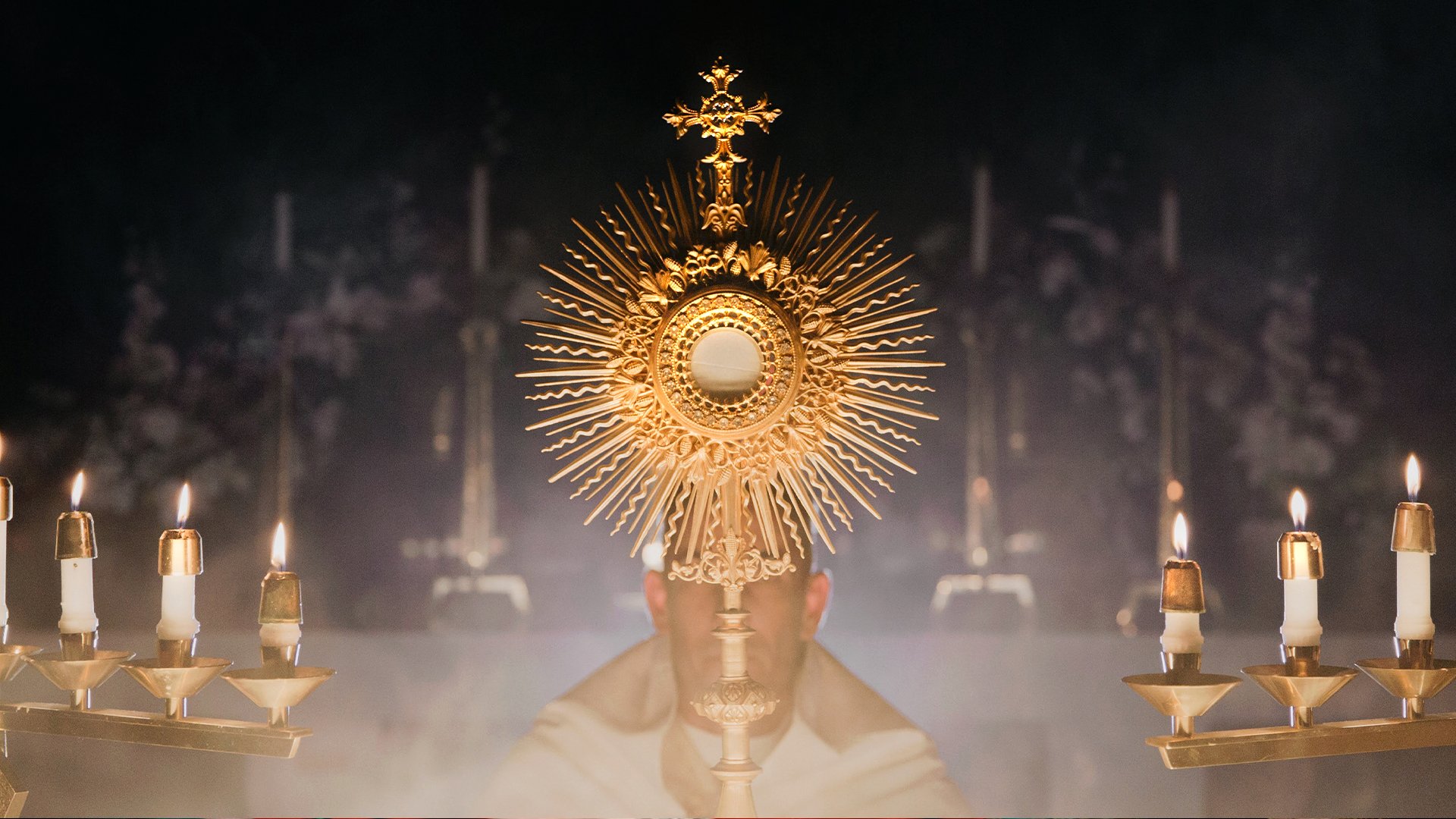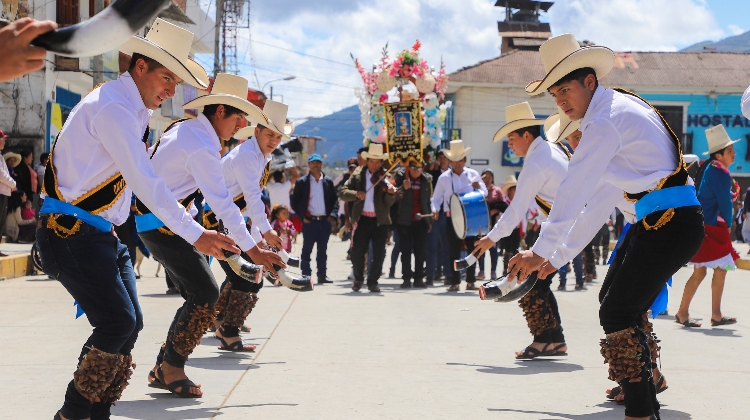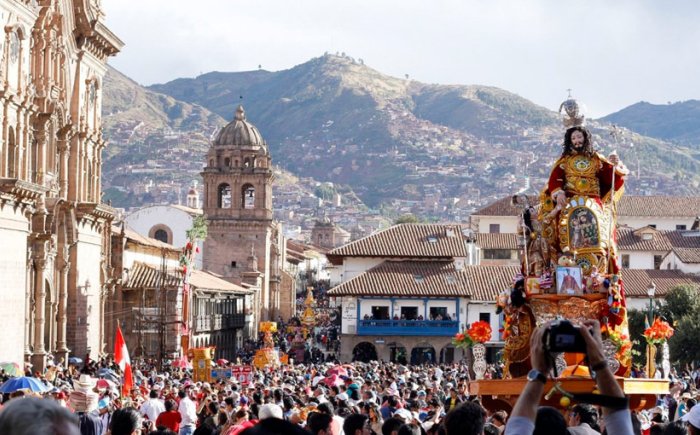Corpus Christi: History, Celebration, and Tradition
Corpus Christi, a Latin phrase that means "Body of Christ," is a major religious celebration in the Catholic Church. This feast, celebrated with great devotion and traditional fervor, honors the Eucharist, which represents Jesus Christ's body and blood. The celebration has deep historical roots and is characterized by elaborate processions, masses, and local festivities. It was designated as a "Peruvian Cultural Heritage" in 2004, highlighting its cultural and religious significance.

Historical Background.
Corpus Christi originated in the thirteenth century, inspired by the visions of Saint Juliana of Mont Cornillon in Belgium. Born in 1193, Saint Juliana had a strong devotion to the Blessed Sacrament. Her vision for a special Eucharistic feast was shared with Liège's Bishop and Archdeacon. One of them, later Pope Urban IV, established the feast in 1264 with the papal bull "Transiturus de hoc mundo."
When is Corpus Christi celebrated?
Corpus Christi is celebrated 60 days after Easter Sunday, usually on a Thursday. However, since 1989, many celebrations have been moved to the following Sunday to accommodate modern schedules. Despite this shift, some communities continue to hold the procession on Thursday, observing it as a local holiday.
Celebrations Around the World
In Spain, Corpus Christi is celebrated with processions that combine religious solemnity with local traditions, some of which have pagan roots. The celebrations are marked by deep respect and devotion, making it an important event on the Catholic calendar.
Significance in Peru
Corpus Christi was introduced by Spanish conquistadors in the 16th century and is celebrated in Peru with distinct regional traditions, particularly in Cusco and Cajamarca.
Cusco
In Cusco, the celebration revolves around the protection of the Virgin of Bethlehem and Saint Joseph, who are taken to the Cathedral to await the arrival of other saints from all over the city. The central day includes a solemn mass attended by clerical and social authorities, followed by a grand procession of the Eucharist through the main square. The event culminates with a blessing of the people and the main procession of saints.
During this time, locals enjoy "chiriuchu," a traditional dish made up of various meats, including guinea pig and dried beef, as well as corn, cheese, and other ingredients. The saints rest in the cathedral for eight days, during which they are said to "debate" the city's fate. The festivities end with a farewell procession.
Cajamarca
In Cajamarca, the Host is carried in a magnificent golden and silver monstrance known as "La Preciosa," which is adorned with a radiant gold sun. Following a solemn mass, the Host is processed around the Plaza de Armas, which is decorated with beautiful flower carpets and altars. This public and solemn display of faith features elaborate decorations and creative religious motifs.

Corpus Christi in Cusco: Activities and Preparations.
The preparations for Corpus Christi are extensive. During the processions, "Carguyoqs" or hosts provide food, beverages, and musical bands to accompany the faithful.
Entry of the Saints
On the eve of the Eucharistic celebration, saints are carried from their respective churches to the central square, often over long distances. They gather at the Santa Clara Arch and proceed to the Church of San Pedro, where a symbolic key is handed over before moving on to the cathedral.
Central Celebration.
The main event includes a Quechua mass that celebrates the region's cultural heritage. The highlight is a procession of 15 saints, each accompanied by traditional music and dance. The procession continues into the night and ends with each statue returning to the cathedral.
Octava de Corpus
A week later, the saints are paraded around the main square in a ceremony known as "the octave." This event begins in the afternoon and extends into the evening.
Return of the Saints
Following the octave, the saints are led back to their respective churches in another round of processions, signaling the end of the festivities.
Importance of Corpus Christi
The Eucharist is described as "the source and summit of Christian life" by the Second Vatican Council. It represents Christ's sacrifice and presence, and it deserves our deepest respect and adoration. Saint Thomas Aquinas' hymn "Tantum Ergo" expresses the reverence due to this sacrament.

Saints of Corpus Christi in Cusco
Fifteen saints and virgins participate in the Corpus Christi celebrations in Cusco:
- Saint Anthony of the Parish of San Cristóbal
- Saint Jerome of the Parish of San Jerónimo
- Saint Christopher of the Parish of San Cristóbal
- Saint Sebastian of the Parish of San Sebastián
- Saint Barbara of the Parish of Poroy
- Saint Anne of the Parish of Santa Ana
- Saint James the Apostle of the Parish of Santiago
- Saint Blaise of the Parish of San Blas
- Saint Peter of the Parish of San Pedro
- Saint Joseph of the Parish of Belén
- Virgin of the Nativity of the Parish of Almudena
- Virgin of Remedies of the Church of Santa Catalina
- Purified Virgin of the Parish of San Pedro
- Virgin of Bethlehem of the Parish of Belén
- Immaculate Conception, also known as "La Linda," of the Cathedral Basilica
Cultural Activities
Corpus Christi in Cusco features a blend of religious and cultural activities:
- Processions: Saints and virgins are carried to the cathedral.
- Religious Services: Special masses and services are held.
- Music and Dance: Traditional music and dances are performed.
- Traditional Food: Special dishes like "chiriuchu" are prepared and enjoyed.
- Fairs: Local fairs with food, crafts, and other goods take place.
- Community Activities: Community gatherings and celebrations in public spaces.
Gastronomy:

Chiriuchu
¨Chiriuchu," the flagship dish of Corpus Christi, consists of roasted guinea pig, sausage, corn, cheese, and various meats. The combination of these elements results in a unique culinary experience.
Chicharrón
In addition to chiriuchu, "chicharrón" (fried pork) is a popular dish at the festival, served with fried potatoes, corn, and a spicy onion salad.
Seasonal Fruits
Seasonal fruits like coconut, sugar cane, cherimoya, and pomegranates are consumed during the celebrations, adding to the festive atmosphere.
Traditional Dances
Several traditional dances are performed during Corpus Christi:
- Ukukus: Dancers with woolen costumes and masks.
- Qollas or Qapaq Qolla: Dancers with intricate costumes and masks.
- Majeños: Dancers with exaggerated masks.
- Ch'unchos and Ch'unchachas: Dances with a jungle theme.
- Contradanza and Mestiza Qollacha: Colonial-era dances that have persisted.
Qhapaq Ñan
During Corpus Christi, the Qhapaq Ñan (Inca Trail), a UNESCO World Heritage site, is used by dancers for ritual movements, adding historical significance to the celebrations.
Corpus Christi is a profound expression of faith and culture, blending religious devotion with rich traditions. Whether in Cusco, Cajamarca, or elsewhere in the world, the Corpus Christi celebration of the Eucharist exemplifies the enduring power of faith and community. If you have the opportunity to attend this festival, it will provide a unique and enriching glimpse into a vibrant cultural heritage.
Ready to embark on your Peruvian adventure? Book your trip now and start the adventure of a lifetime.
Thank you for reading!
Please, follow us on Facebook and Instagram, click on the following icons: ![]()
![]()
![]()
And If you liked the article, you are very welcome to share it on your social media.
